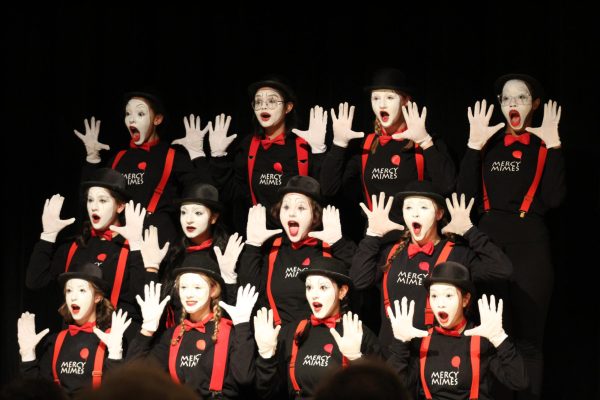February’s overshadowed holiday
If there is one thing that Mercy girls love, it’s a holiday. From Halloween and Christmas to Valentine’s Day, along with birthdays in between, the exciting buzz of activity and decoration that fills Mercy on these occasions is a refreshing break from day-to-day school. Among these holidays, though, is one that seems to be overshadowed. Groundhog Day marks the possible end of a long and dreary winter, providing hope of an upcoming spring. While many Americans recognize the day itself, very few know what it actually represents or where it originated.
Punxsutawney Phil, a groundhog made famous by his role as a weather-predicting woodchuck from Punxsutawney, Pennsylvania, is said to be 131 years old. While this is likely not the case, it illustrates the role that myth and magic plays in the holiday, which has been celebrated since 1886. The legends that inspired such a celebration, though, were around long before Phil himself. For centuries, mythic tales about the awakening of animals at specific times of the year have travelled the globe, according to the Punxsutawney Groundhog Club. The groundhog is believed to be one of these animals, and a particularly wise one at that.
On the second day of February each year, Phil comes out of his underground hole in order to determine the upcoming weather forecast. The legend holds that, should Phil see his shadow, he shall return back to his hole to await six more weeks of winter. However, if the day is cloudy and his shadow is unseen, the groundhog will stay above ground and look forward to an early spring.
Groundhogs were not the original inspiration for such a prediction, though. Germans, who first settled Pennsylvania, celebrated a holiday known as Candlemas Day, which celebrated the lighting of candles by the early Christian clergy. It was believed that the weather on Candlemas Day would determine whether a 6-week “second winter” would begin or whether spring was on its way.
However, the legend soon evolved into including animals and their shadows on the same day. These settlers found that a large number of groundhogs populated the state and determined that the animals were both intelligent and sensible. Thus, the early German settlers decided that the groundhog, relying on its sheer wisdom, would be able to decipher between an early spring or a lasting winter based on the appearance of its own shadow.
While the event itself has grown into a yearly spectacle, focused entirely upon Phil’s exit from his hibernation burrow on Gobbler’s Knob in front of thousands of onlookers, the holiday itself is rather small. On top of that, Phil’s predictions only have about a 39 percent accuracy rate, according to Stormfax Almanac. Many doubt the groundhog’s ability to predict future weather, as only 14 percent of 50 polled Mercy students regard the predictions with any sense of truth. Yet Groundhog Day offers a bit of hope for an early spring.







